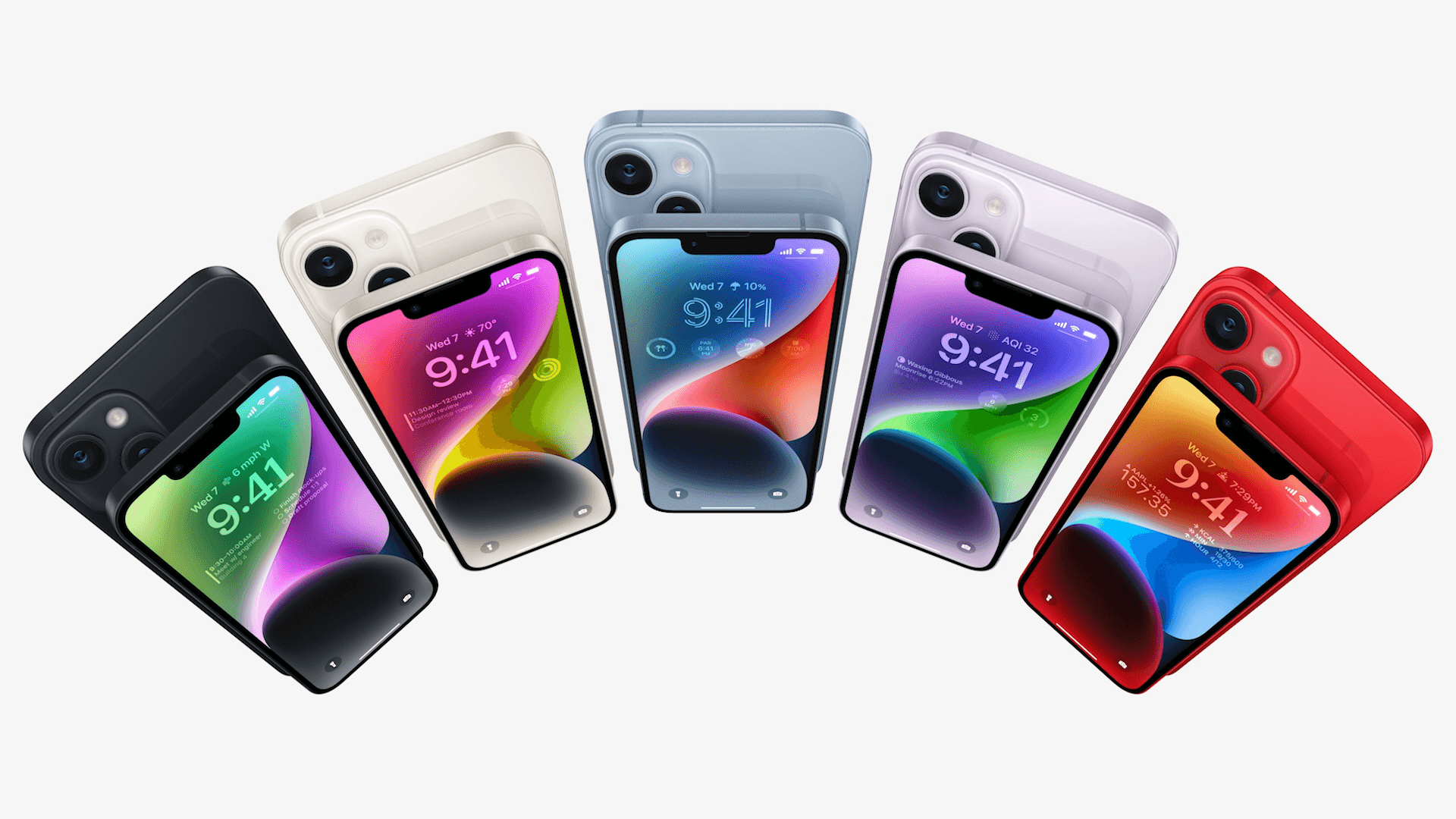
“The Apple iPhone 7: A Retrospective on a Defining Smartphone
Related Articles The Apple iPhone 7: A Retrospective on a Defining Smartphone
- Samsung Galaxy A50: A Deep Dive Into A Mid-Range Marvel
- Samsung Galaxy F12: A Deep Dive Into Affordability And Functionality
- Samsung Galaxy S22 Ultra: A Deep Dive Into The Pinnacle Of Android Smartphones
- Redmi Note 10
- Samsung Galaxy M12
Introduction
With enthusiasm, let’s navigate through the intriguing topic related to The Apple iPhone 7: A Retrospective on a Defining Smartphone. Let’s weave interesting information and offer fresh perspectives to the readers.
Table of Content
The Apple iPhone 7: A Retrospective on a Defining Smartphone

The Apple iPhone 7, released in September 2016, holds a significant place in the history of smartphones. While not the most revolutionary device Apple ever produced, it represented a refinement of existing technologies and introduced several key features that would become industry standards. This article delves into the iPhone 7, exploring its design, performance, camera capabilities, software experience, and its lasting impact on the smartphone market.
Design and Build Quality
The iPhone 7 retained a familiar design language from its predecessors, the iPhone 6 and 6s. However, subtle refinements made it a more polished and appealing device.
- Aluminum Unibody: The iPhone 7 featured an aluminum unibody construction, providing a premium feel and solid durability. The aluminum was available in several finishes, including silver, gold, rose gold, black, and the glossy "Jet Black."
- Improved Water Resistance: A significant upgrade was the introduction of IP67 water and dust resistance. This meant the iPhone 7 could withstand immersion in water up to 1 meter for 30 minutes, providing users with greater peace of mind.
- Redesigned Antenna Bands: The antenna bands, which were previously prominent on the rear of the iPhone 6 and 6s, were repositioned closer to the top and bottom edges of the device. This resulted in a cleaner, more streamlined appearance.
- Solid-State Home Button: One of the most controversial changes was the replacement of the physical, clickable home button with a solid-state button. This button used Apple’s Taptic Engine to simulate the feel of a click, providing haptic feedback. While some users initially missed the traditional button, the solid-state design proved to be more durable and reliable over time.
- Display: The iPhone 7 featured a 4.7-inch Retina HD display with a resolution of 1334 x 750 pixels. While the resolution remained the same as its predecessors, Apple claimed the display was 25% brighter and offered a wider color gamut, resulting in more vibrant and accurate colors.

Performance and Hardware
The iPhone 7 was powered by Apple’s A10 Fusion chip, a quad-core processor that delivered a significant performance boost over the previous generation.
- A10 Fusion Chip: The A10 Fusion chip featured two high-performance cores for demanding tasks and two energy-efficient cores for lighter tasks. This architecture allowed the iPhone 7 to deliver excellent performance while also maximizing battery life.
- RAM: The iPhone 7 had 2GB of RAM, which was sufficient for most tasks but could sometimes be a bottleneck when multitasking with demanding apps.
- Storage Options: The iPhone 7 was available in 32GB, 128GB, and 256GB storage options.
- Battery Life: The iPhone 7 offered improved battery life compared to the iPhone 6s, thanks to the A10 Fusion chip’s efficiency and a slightly larger battery.
- Stereo Speakers: The iPhone 7 was the first iPhone to feature stereo speakers, with one speaker located at the bottom of the device and the other in the earpiece. This provided a more immersive audio experience for music, videos, and games.

Camera Capabilities

The iPhone 7 featured a 12-megapixel rear camera with optical image stabilization (OIS), a wider f/1.8 aperture, and a six-element lens. These improvements resulted in better low-light performance, sharper images, and more natural-looking colors.
- Image Quality: The iPhone 7’s camera produced excellent image quality in a variety of lighting conditions. Images were sharp, detailed, and had accurate colors.
- Low-Light Performance: The wider aperture and OIS allowed the iPhone 7 to capture more light, resulting in better low-light performance with less noise.
- Video Recording: The iPhone 7 could record video in 4K resolution at 30fps, as well as 1080p video at 30fps or 60fps. It also supported slow-motion video recording at 120fps or 240fps.
- Front-Facing Camera: The iPhone 7 featured a 7-megapixel front-facing camera, which was a significant upgrade over the 5-megapixel camera on the iPhone 6s. This resulted in sharper, more detailed selfies.
Software Experience
The iPhone 7 launched with iOS 10, which introduced several new features, including a redesigned lock screen, improved notifications, and a more intelligent Siri.
- iOS Integration: The iPhone 7 benefited from Apple’s tight integration of hardware and software, resulting in a smooth and responsive user experience.
- App Ecosystem: The iPhone 7 had access to the vast and diverse App Store, offering a wide range of apps for productivity, entertainment, and more.
- Software Updates: Apple provided regular software updates for the iPhone 7, ensuring that users had access to the latest features and security patches.
Controversies and Criticisms
Despite its many strengths, the iPhone 7 was not without its controversies and criticisms.
- Headphone Jack Removal: The most controversial decision was the removal of the 3.5mm headphone jack. Apple argued that this allowed for a slimmer design and more space for other components, but many users were unhappy with the change. Apple included a Lightning-to-3.5mm headphone adapter in the box, but this was seen as an inconvenience.
- Design Similarity: Some critics argued that the iPhone 7’s design was too similar to its predecessors, the iPhone 6 and 6s. While there were subtle refinements, the overall look and feel of the device remained largely unchanged.
- Price: The iPhone 7 was priced at a premium, which made it inaccessible to some consumers.
Legacy and Impact
The iPhone 7 had a significant impact on the smartphone market, introducing several features that would become industry standards.
- Water Resistance: The introduction of IP67 water resistance was a major step forward for the iPhone and helped to popularize this feature in other smartphones.
- Solid-State Home Button: While initially controversial, the solid-state home button proved to be more durable and reliable than the traditional button.
- Stereo Speakers: The inclusion of stereo speakers improved the audio experience on the iPhone and set a new standard for smartphone audio.
- Camera Improvements: The iPhone 7’s camera improvements, particularly in low-light performance, helped to solidify the iPhone’s reputation as one of the best smartphone cameras on the market.
Conclusion
The Apple iPhone 7 was a defining smartphone that represented a refinement of existing technologies and introduced several key features that would become industry standards. While not without its controversies, the iPhone 7 was a well-designed, powerful, and capable device that left a lasting impact on the smartphone market. Its improved water resistance, solid-state home button, stereo speakers, and camera improvements set a new standard for smartphones and helped to solidify the iPhone’s position as one of the leading smartphones in the world. Even years after its release, the iPhone 7 remains a relevant and capable device for many users.

Closure
Thus, we hope this article has provided valuable insights into The Apple iPhone 7: A Retrospective on a Defining Smartphone. We thank you for taking the time to read this article. See you in our next article!
1 thought on “The Apple IPhone 7: A Retrospective On A Defining Smartphone”